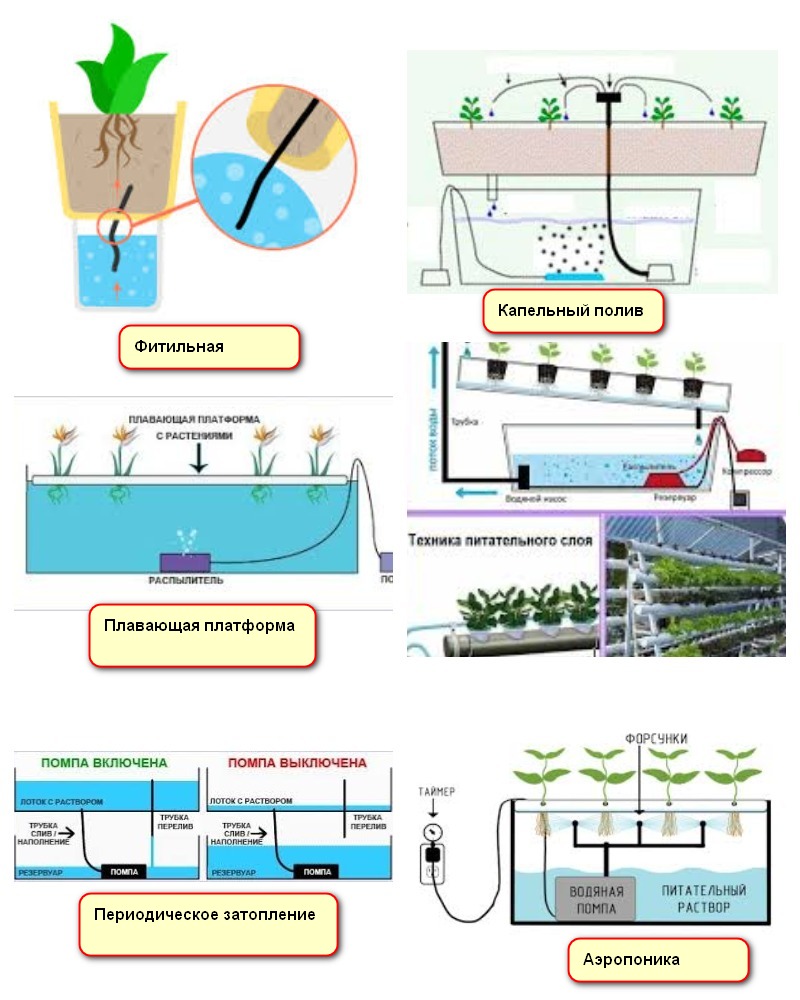In the 21st century, hydroponics is becoming the main direction of growing agricultural products on earth. Population growth, combating climate warming, saving water resources, solving environmental problems - this is not a complete list of problems that force a person to switch to new food production technologies.
The desire to establish the production of garden crops on their farm without using soil poses the question of how to choose and where to buy an effective structure for gardeners.
What popular models are presented on the Russian market, which hydroponic plant is better to buy from which company, what selection criteria should be taken into account? The editors of the site "bestx.htgetrid.com/en/", answering these questions, offer you an overview of the best installations for 2020.
Content
- 1 The origins of hydroponics
- 2 Pros and cons of hydroponics
- 3 What are hydroponic systems
- 4 What hydroponics doesn't work without
- 5 Rating of quality hydroponic systems for 2020
- 6 Review of popular hydroponic devices
- 6.1 4-modular germinator - "Health treasure X4" aerosad
- 6.2 AquaPot Trio hydroponic system
- 6.3 Wilma Small4 hydroponic plant 11 l
- 6.4 Dutch Aero Complex 1
- 6.5 Hydroponic plant Panda System Aero Box GHE
- 6.6 RainForest hydroponic system
- 6.7 Hydroponic system Ecogrower max GHE
- 6.8 Hydroponic system Aero Flo 10 GHE
- 6.9 Growing system AeroFarm 3 GHE
- 6.10 Mini Hydroponic Farm Cutting Board 27 GHE
- 7 Conclusion
The origins of hydroponics
When did man come to the conclusion that it is not so necessary to use soil for plant growth? We believe it happened in ancient times. It was hard not to pay attention to the fact that wet grain or roots in a warm dark place germinate after a few days. Grain takes root and roots leaves.
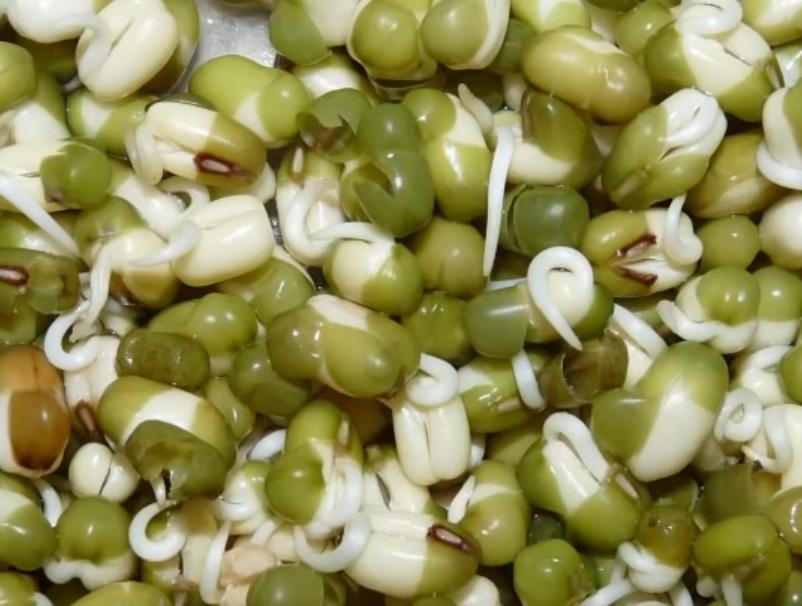
In those days, there were no modern technologies, which did not give rise to the development of this idea. But a little later, we assume, the situation has changed.
It is believed that one of the wonders of the world - the Hanging Gardens of Babylon in Babylon were nothing more than an industrial hydroponic farm. Otherwise, there should have been traces of structures that supported thousands of tons of soil.
In the 17th century, a scientist from Holland van Helmont conducted an experiment that was unique for its time. He weighed the soil in a barrel and planted a willow in it, he watered it only with rainwater. When she grew up a few years later and her weight was already tens of kilograms, it turned out that the weight of the soil had slightly decreased. This proved for the first time that growth does not require soil, but nutrients. The main process for the synthesis of organic matter comes from carbon using solar energy in the form of light and heat.
And only at the end of the 19th century, German scientists came up with the composition of fertilizers for growing without soil. From that moment on, the modern history of hydroponics began.
Pros and cons of hydroponics
Continuous discussions "for" and "against" soilless technology do not cease to this day. Fears that food products grown on "chemistry" are hazardous to health are unfounded. We have been eating livestock products for a long time, although animals are raised not in natural conditions, but in artificial ones. It is impossible to obtain modern weight gain in livestock and poultry farming without chemical additives, without fortified mixed fodder and without green fodder obtained with the help of chemical fertilizers.
Achievements in the development of a complex of fertilizers for soilless technology can significantly increase labor productivity in agriculture. Development in industries related to the exploration of space, the oceans, deserts and ice spaces is unthinkable without the production of plant products in a limited space, that is, without hydroponics.
Industrial soilless farms around the world produce a significant proportion of greens, both for human consumption and as animal feed. In the USA, almost the entire volume of salad crops is obtained from hydroponic complexes. In cities, sewage treatment plants are used, which contain all the substances necessary for plant growth. This direction is very important for wastewater treatment.
The new technology, using a closed cycle of circulation of a liquid medium, solves the acute problem of conserving water resources, making it possible to grow green products in the arid regions of the Earth.
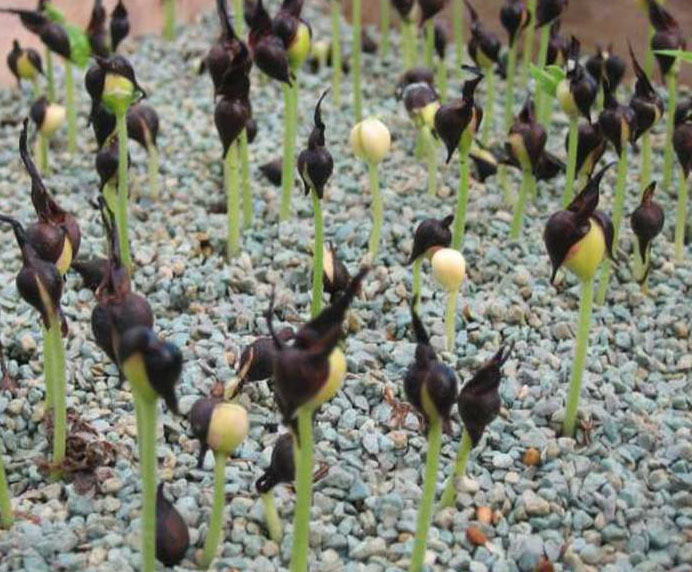
What are hydroponic systems
There are two types of hydroponics - passive and active.
Passive is so called because there is no fluid movement in it. The most inexpensive designs work according to this principle. These include wick and floating platforms.
In active schemes, there is a water pump that periodically pumps the solution, irrigating the roots. Additionally, for aeration of the solution, an air compressor and a timer are installed in them, providing the necessary operating mode.
Wick
The simplest scheme uses capillary fluid movement. One end of the wick is placed in containers with a fertilizing medium, and the other in the roots of a plant planted in the substrate. The nutrient medium rises up the wick and delivers food to the roots.
This scheme is easy to do with your own hands. The disadvantage is that there is no aeration of the roots with oxygen.
On floating platforms
Also called the deep dive method. This diagram represents platforms floating in containers filled with a liquid medium. Plants are planted in nests or cups and their roots are continuously submerged in water. An air compressor in a liquid sump saturates the liquid with air. This doubles the growth rate.
This type of scheme is used on industrial farms equipped with long pools. At one end of the pool, rafts are planted. During their movement through the entire pool, the crop ripens, and it is harvested at the other end.
Devices based on this principle can be made independently. It is inexpensive as there is no need to automate the process. How many compressors you need to buy depends on the area of your "vegetable garden".
Active systems show the best results. Making them yourself is more difficult. In addition, they also need a water pump and a timer to work effectively.
Periodic flooding
Structurally, it is the same as a floating platform. Only the tank for draining the solution and the drain line are added. Then, after a predetermined period of time, the timer turns on the water pump, and the main tank is refilled to periodically flood the roots. In the additional tank, the compressor saturates the medium with oxygen.
Nutrient layer technique
These devices use the force of gravity to move the working medium. The tilted trays contain potted plants. The water pump delivers the oxygenated liquid to the top and then gravity flows down the bottom of the sump in a thin layer down. This ensures the wetting of the roots.
Pipes are often used instead of pallets. This allows for more efficient use of the volume of the room, the pipes are placed one above the other. In this way, vertical systems are made, which make it possible to increase the yield per unit area tens of times.
Drip irrigation
These are simple devices in terms of design, in which irrigation is carried out with droppers installed under the roots of each plant.Then the solution is drained through a drainage device into a container, where it is saturated with atmospheric oxygen and again flows to the droppers.
This scheme is implemented in small devices for individual use. The reason for this is that large areas require a lot of droppers. In case of breakdown of some of them, the reliability of the complex decreases.
Aeroponics
The most effective scheme for household use. Consists of only one container with a nutrient medium, where it is saturated with oxygen. The water pump then supplies the liquid to the nozzles, which spray it onto the roots. This achieves the compactness of the device. Full automation of work requires from a person only periodic replacement of the solution and participation in the harvest.
Automation also has a downside. In the event of a power outage, these devices become completely lifeless. Therefore, it is imperative to use an autonomous power supply system. For small powers, the solution may be to use batteries together with inexpensive voltage converters.
What hydroponics doesn't work without
Choosing a scheme, designing and manufacturing it is not the most important thing in the philosophy of soilless growing of agricultural products. The main thing is the composition of the nutrient medium. This is not just a fertilizer mixture that we are used to using in the garden.
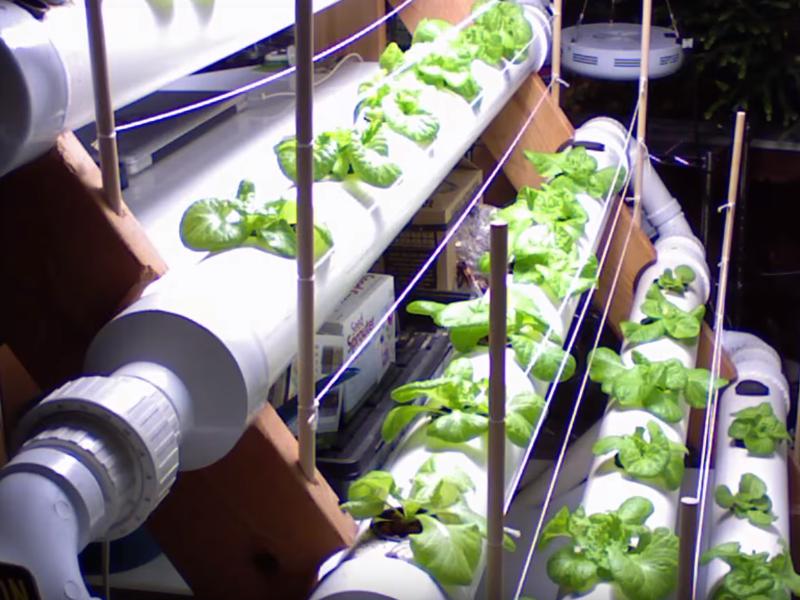
There are many specially formulated formulations, fertilizers in the form of powder or tablets, on the market. They can always be found and ordered online at any online gardening store. The required number can be roughly estimated by the following formula. As a result, one kilogram of fertilizer gives 30 kilograms of green mass.
The main focus of cultivation is on controlling the acidity and concentration of the working environment. If in small complexes this problem is solved by periodic replacement of the solution, then on larger-scale ones it is necessary to purchase devices for these purposes.
The next stage is the choice of a substrate for planting. What it is? In hydroponics, vermiculite, pumice, gravel, fired clay artificial gravel, mineral wool, etc. are used as "soil".
All of them must meet certain requirements:
- chemically neutral;
- hygroscopic for capillary rise of liquid;
- resistant to weathering and mechanical destruction.
For small home installations, moss is used that meets all of these requirements.
The main thing without which no biological technology will work is light. This is the main growth factor. If it is available in insufficient quantities, then this will determine the boundary of plant development, despite the sufficient presence of all other factors. Therefore, the installation of lighting in these complexes is a top priority.
In the end, always remember that the success of your enterprise is Light, Air, Water, Heat and Power.
Rating of quality hydroponic systems for 2020
| Hydroponic plant name | Production | Sowing area, sq.m. | price, rub. |
|---|---|---|---|
| Seed sprinkler 4-module Health Klad X4 | Russia | 0.16 | 2200 |
| AquaPot Trio hydroponic system | Russia | 0.12 | 6500 |
| Wilma Small4 hydroponic plant 11 l | Holland | 0.18 | 8251 |
| Hydroponic system Dutch Aero Complex 1m2 | France | 60 seats 0.24 | 44000 |
| Hydroponic plant Panda System Aero Box GHE | France | 40 seats 0.12 | 34000 |
| RainForest | France | 0.12 | 26000 |
| Ecogrower max GHE | France | 0.12 | 18000 |
| Aero Flo 10 GHE | France | 0.22 | 21000 |
| AeroFarm 3 GHE | France | 0.16 | 9500 |
| Cutting Board 27 GHE | France | 27 seats 0.12 | 7000 |
Review of popular hydroponic devices
Popular types of installations for growing green crops without soil are considered here. The description, advantages and disadvantages of each of the models, which are supplied to the market by the best manufacturers of mini farms, are given.
4-modular germinator - "Health treasure X4" aerosad
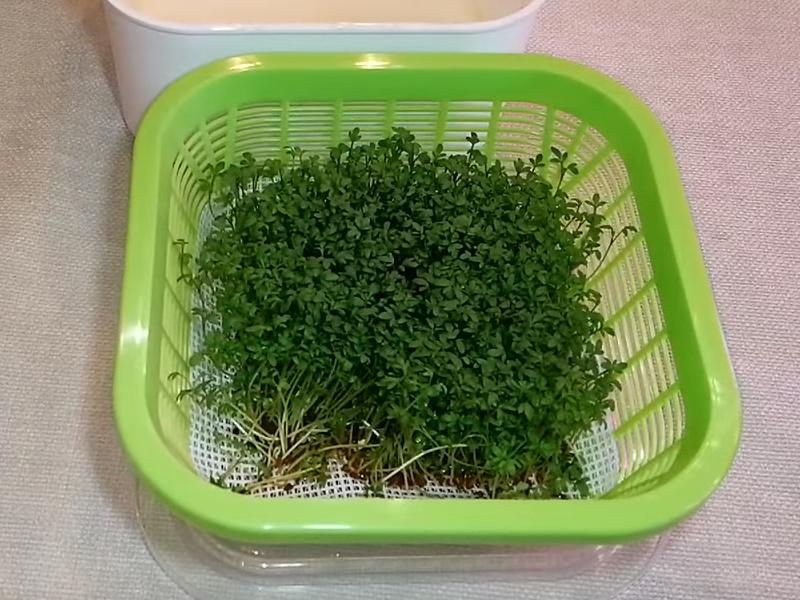
A healthy diet, which includes eating sprouts of various seeds, so captured the minds of people that their sprouting in popularity surpassed the production of vegetable products in the garden.To meet the demand, Perm LLC “SmartHydroCompany” began to produce simple hydroponic mini-aggregates designed for apartment conditions.
These two- or four-module systems, which differ in price, can be placed on a windowsill. The proposed version of four three-liter containers has, inserted into them, lattice containers for filling seeds. Additionally there are nests for sprouting bulbs or small beets. The supplied compressor blows air into each container filled with water, providing the seeds with oxygen.
The device is positioned on the market as a grain sprouter. In one or two days, enough seedlings are obtained to support the diet. However, nothing prevents you from growing greens in them for yourself and your pets. By experimenting with the addition of micro-doses of fertilizers to the water, it is possible to grow vegetable products.
Advantages:
- small compressor power - 3 watts;
- the ability to use from 1 to 4 containers;
- silent work;
- acceptable price.
Disadvantages:
- automatic solution supply is not provided;
- small crop area - only 0.16 square meters.
AquaPot Trio hydroponic system
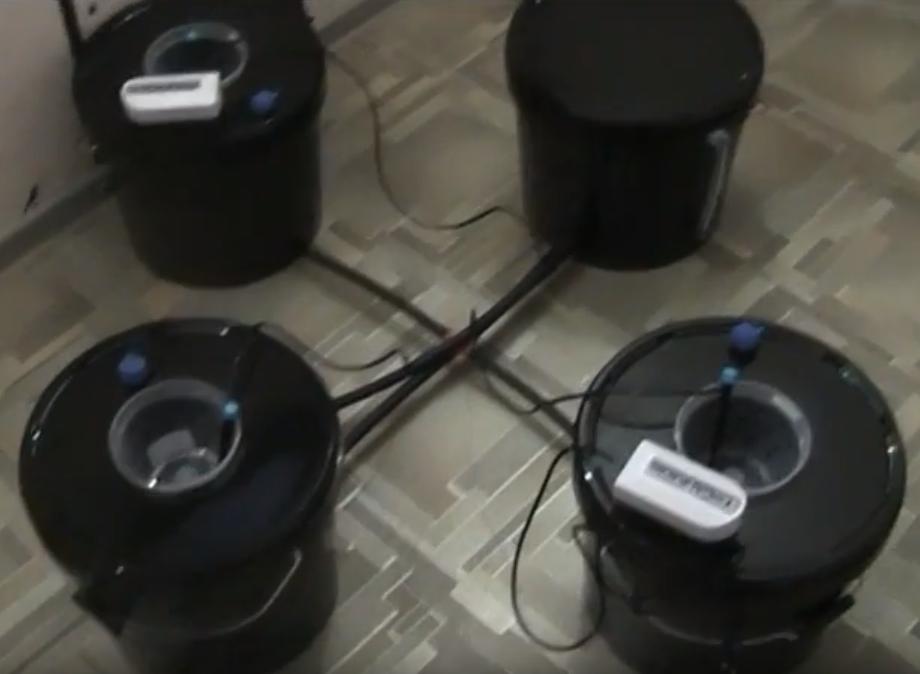
A domestic mini-farm for growing greens, vegetables and flowers at home consists of four plastic containers, three of which are for planting, and one for fertilizers. This product line includes equipment with two, four and eight containers. The proposed option is the best of them in terms of price-efficiency ratio.
AquaPot Trio operates on the principle of deep diving. The air compressor continuously enriches the nutrient medium with oxygen. The water pump delivers fertilizer to the roots, which ensures good aeration along with the availability of fertilizer. The area occupied by the entire installation is 1.4 sq. m., and for landing 0, 24 sq. m. Designed for home or summer cottages.
Advantages:
- completed with a substrate for filling planting pots;
- automatic maintenance of the solution level in containers;
- you can vary the number of containers;
- economical (low power of the water pump of 8 watts).
Disadvantages:
- According to buyers, the price is too high;
- Wilma Small hydroponic device 4.
Wilma Small4 hydroponic plant 11 l
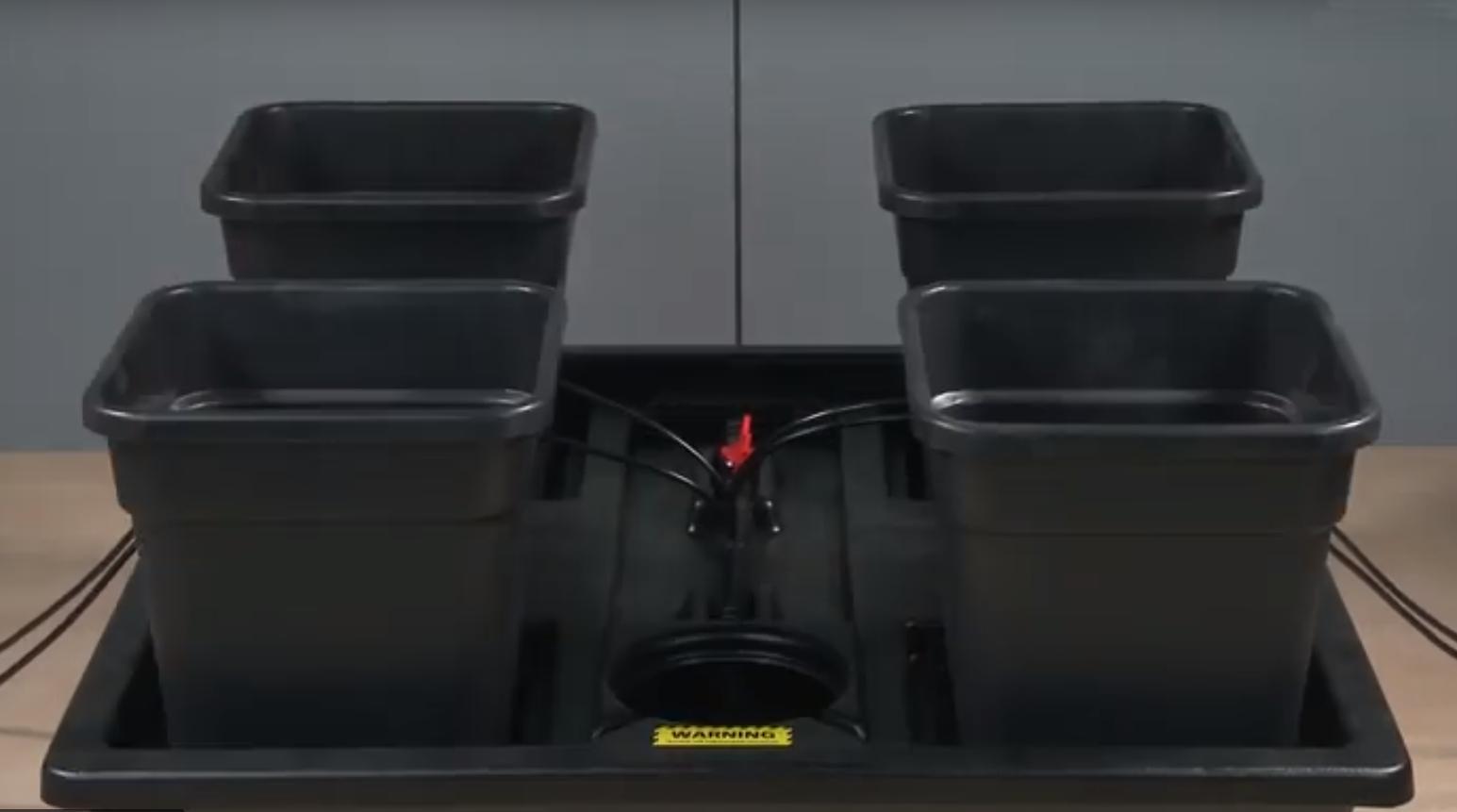
The Dutch setting is minimal and simple. On the other hand, it is a guarantee of reliability. A product line consisting of 2, 4, 6, 8, or 10 planting pots goes on sale. The most popular option considered here is with 4 containers of 6 liters each. It is the most acceptable in terms of price and end result.
It works on the principle of drip irrigation. The presence of a timer allows you to adjust the time between feeding the solution. Watering itself lasts 15 minutes, during which time 0.5 liters of nutrient mixture is supplied, providing the necessary schedule for the supply of water and fertilizers to the roots.
At the initial stage of grain germination and forcing seedlings, it is necessary to set the watering frequency to 6 hours. As it grows, this interval decreases to 3 hours.
The total volume of medium in the lower pan is 30 liters, with a recommendation to change it every week. Mineral wool or finely dispersed substrate is used as a filler for pots.
Advantages:
- includes droppers of two types for expanded clay and for moisture-consuming coconut and mineral wool;
- thanks to the timer, the watering schedule is automatically kept.
Disadvantages:
- the desired effect is achieved only with a finely dispersed substrate;
- high price.
Dutch Aero Complex 1
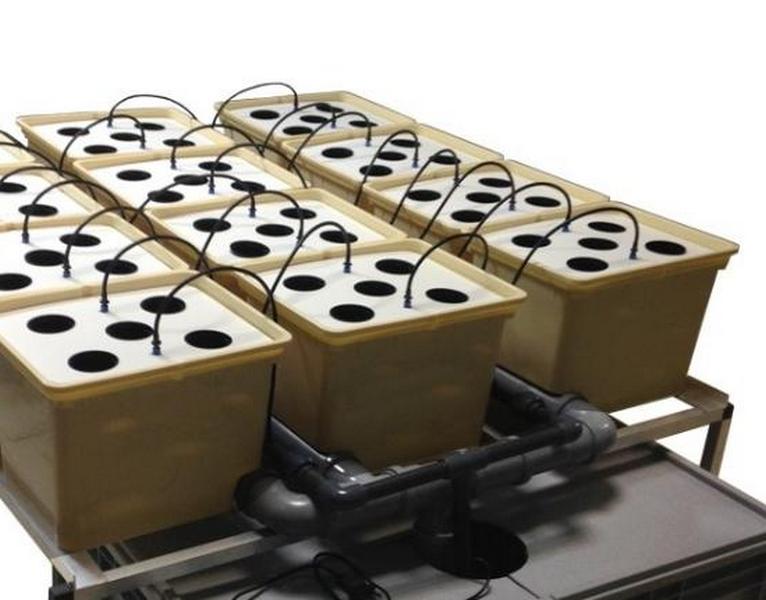
The Dutch Aero Complex 1 mini farm from the French manufacturer GHE is regarded as professional. 12 containers with 5 seats allows you to grow 60 plants at the same time. This is already a commercial approach to growing agricultural products, so it is recommended to buy such an installation for experienced gardeners.
The principle of operation is that in each container there are 2 nozzles that irrigate the root system. Therefore, oxygen and nutrients are supplied to the roots evenly. The entire cultivation process is automated, it remains only to control the composition of fertilizers in the solution and periodically replace it.
Not every tall crop can be grown with this design. But if you use it, for example, for strawberries, then your family, especially children, will be very grateful to you.
Advantages:
- 60 seats will allow you to turn your hobby into a business;
- economical, 100 watts of electrical power;
- compact design.
Disadvantages:
- volatility;
- high price.
Hydroponic plant Panda System Aero Box GHE
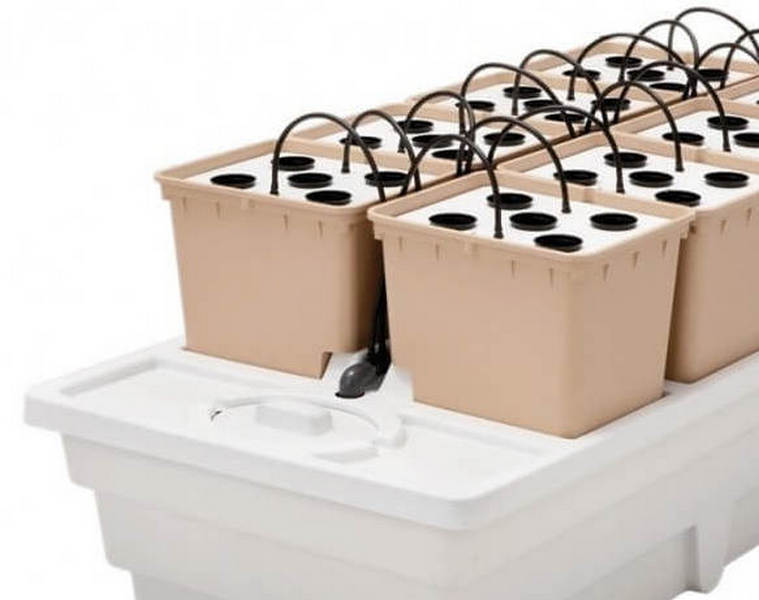
The popularity of GHE hydroponic systems models is complemented by another professional farm Panda System Aero Box GHE. With 40 seats, it has a compact design that fits into a small area of a greenhouse or special tent. The volume of products grown from green crops to tall tomatoes and cucumbers can be sold commercially.
Working on the principle of drip irrigation with simultaneous aeration of a solution of mineral fertilizers, the structure consumes a minimum of electricity. The power of the water pump is 100 watts.
The compressor enriches the nutrient medium with oxygen in the main tank. The mixture is then fed to nozzles, which spray it onto the roots of each plant. This technology ensures high-quality results of the entire process.
Advantages:
- the schedule of watering and aeration is automatically provided;
- ease of maintenance and compactness.
Disadvantages:
- volatility;
- overpriced for 40 seats.
RainForest hydroponic system
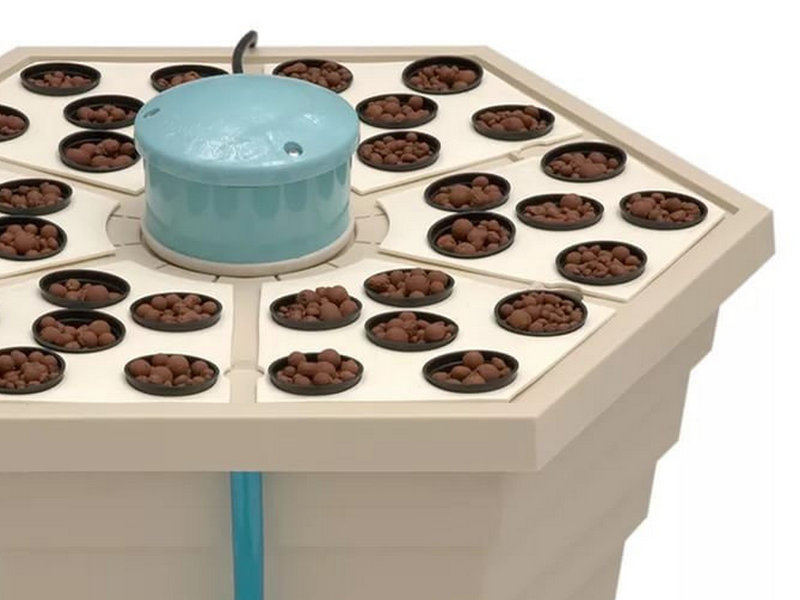
The promising name "Tropical Forest", translated from English, the new French aeroponic unit speaks of its performance. The 36 seats can be used for growing greenery on a commercial scale. This type is intended for experienced gardeners who know how to make an economic effect on agricultural products. More product variants with 6 and 18 seats are on sale.
A centrally positioned compressor blows air into the solution containing the plant roots. Combining aeration with deep immersion, a high efficiency of biological mass growth is achieved without the use of soil. The set includes expanded clay for filling pots, Flora Series 1L fertilizer, a set for determining acidity and a preparation for reducing pH Down.
Advantages:
- compactness with 36 seats allows you to install the structure in an apartment;
- efficiency, compressor power 50 watts.
Disadvantages:
- volatility, with a power outage, stopping aeration can kill plants.
Hydroponic system Ecogrower max GHE
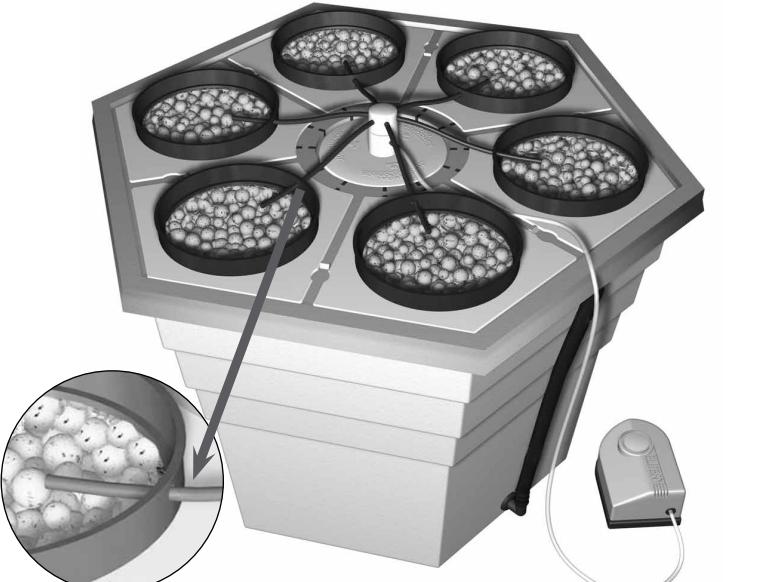
The compact complex of the French company GHE is designed for growing greens, vegetables, flowers and berries. The device is positioned as semi-professional. Six pots, 16 cm in diameter, provide ample harvesting area for the whole family. Can be installed in an apartment or on a balcony.
Works on the principle of drip irrigation. A water pump delivers the solution to the roots through a dropper. Structurally, the body does not differ from the RainForest scheme and, if necessary, can be transformed into a mini aeroponics farm. It is enough to purchase a ready-made center column from RainForest, which may be needed when growing green crops.
Advantages:
- large pots allow you to grow greens;
- efficiency and compactness;
- the possibility of alteration to the aeroponics scheme.
Disadvantages:
- high price.
Hydroponic system Aero Flo 10 GHE
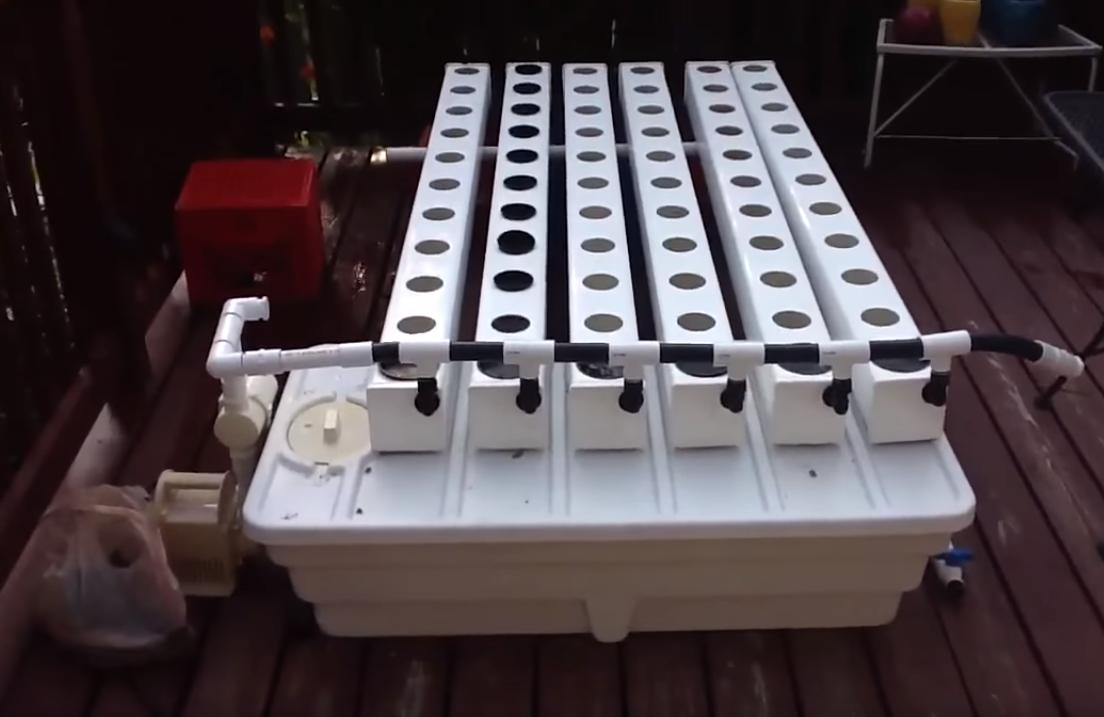
The mini aeroponics farm, made in France, comes in various designs for growing from 10 to 60 plants. The large plant is suitable for commercial vegetable production.For an ordinary consumer, it is enough to buy the Aero Flo 10 GHE kit with 10 seats, given its cost. A bonus is offered with the purchase, which includes fertilizers for hydroponics.
The device works according to the principle of the nutrient layer technique. Greens are in special containers inside which a solution enriched with oxygen flows. The required proportions of oxygen and liquid are provided by automatic control. The volume of the mixture is 50 liters, it is recommended to change it every 10 days.
The high performance characteristics are confirmed by the fact that a similar design scheme is used at NASA for biological research in space.
Advantages:
- automated growing process;
- low power consumption;
- ease of assembly and maintenance.
Disadvantages:
- volatility of the device, in the event of a power outage, an emergency power supply must be provided.
Growing system AeroFarm 3 GHE
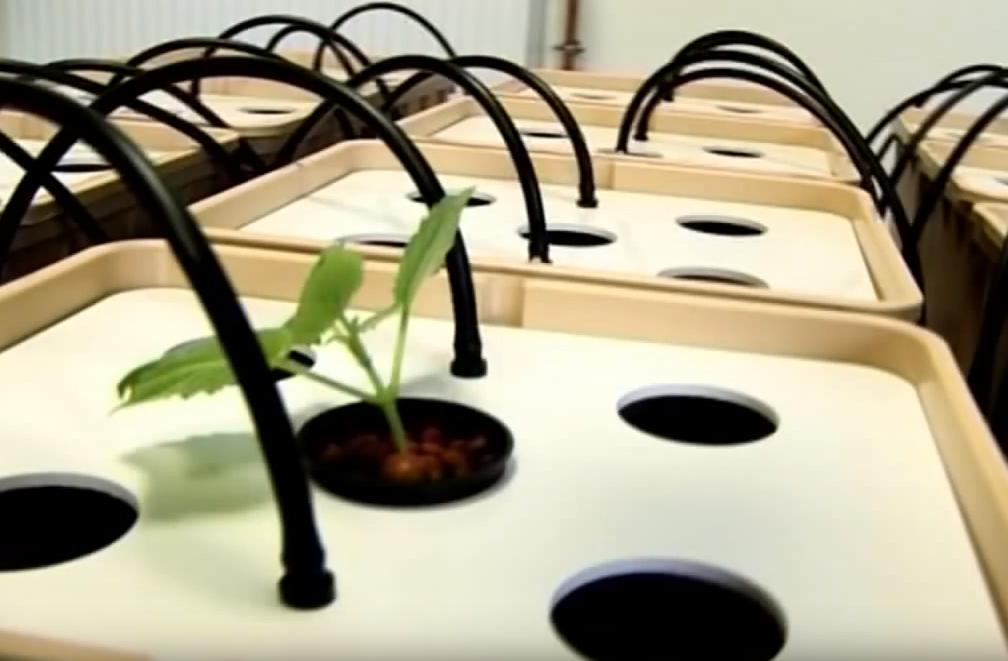
The French farm AeroFarm 3 GHE works on the principle of aeroponics. The compact design measuring 45 cm by 45 cm allows it to be installed even in an apartment. Designed for planting five plants in one container. Its functionality includes not only getting greens, but also forcing seedlings and rooting cuttings.
If you need to increase the landing areas, you can independently solve this problem by purchasing additional sections and connecting fittings. The volume of the nutrient solution tank is 45 liters. Air is continuously supplied to the root zone, enriching them with oxygen.
When using aeroponics, the problem arises of the intensive growth of algae on the surfaces of the device. To combat this, the material used for production eliminates this disadvantage.
Advantages:
- the possibility of installation in an apartment;
- intended not only for greenery, but also for vegetables and cuttings;
- easily expands by purchasing additional sections;
- economical, compressor power 10 watts.
Disadvantages:
- in the event of a prolonged power outage, it is necessary to manually stir the oxygen enrichment solution.
Mini Hydroponic Farm Cutting Board 27 GHE

The French began to produce a very simple unit that can be recommended to novice gardeners. 27 seats allow to produce enough green products to supply the family with vitamins all year round. It is suitable for berries and fruits and vegetables.
Works on the principle of deep immersion with the function of aerating the root system. An air compressor saturates 13 liters of nutrient fluid with oxygen, consuming 5 watts of electricity. Therefore, it can be powered by a battery via a car voltage converter. This is very important, especially in rural areas, where power outages are common.
Your participation in the growing process will consist in periodically checking the acidity of the solution using indicator paper. If the pH starts to drop, change the mixture. This should usually be done once a week.
Advantages:
- ease of operation for such a number of plants;
- non-volatility in the event of a power outage;
- relatively cheap construction.
Disadvantages:
- small pots with a diameter of 5 cm.
Conclusion
The article discusses the current trends in the development of hydroponics. Comparison of different cultivation schemes without soil is given.
The relatively high average price of such systems makes the consumer look for budget options for purchasing them for his farm. Therefore, advice is given here on which type of installation is better to buy, which substrate and fertilizers must be additionally purchased in the online store.
If you have any experience with hydroponic systems, let us know in the comments. Your feedback will help consumers know what to look for in order not to make mistakes when choosing equipment.

